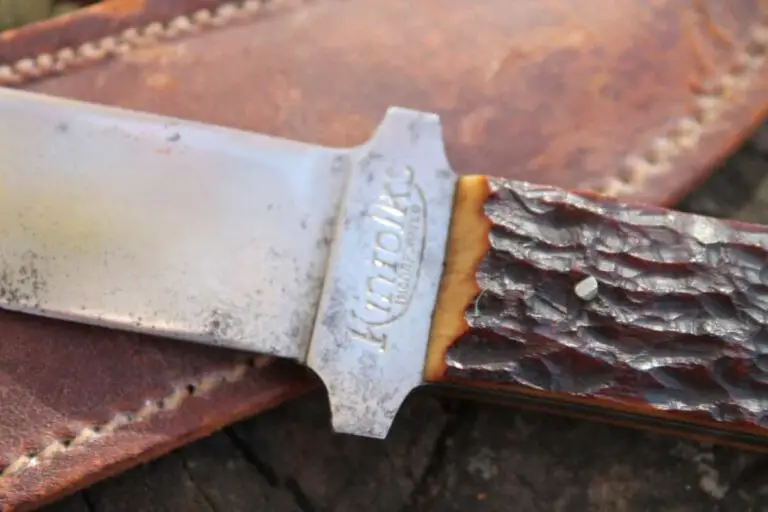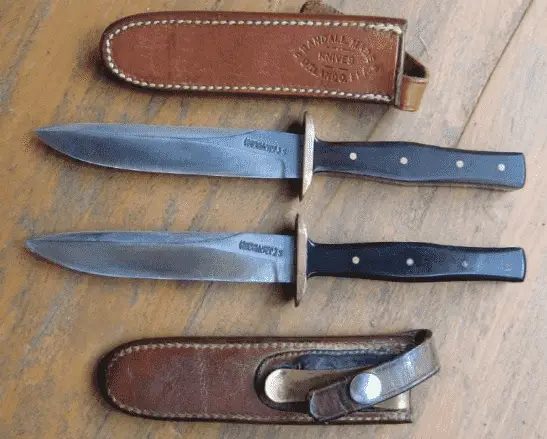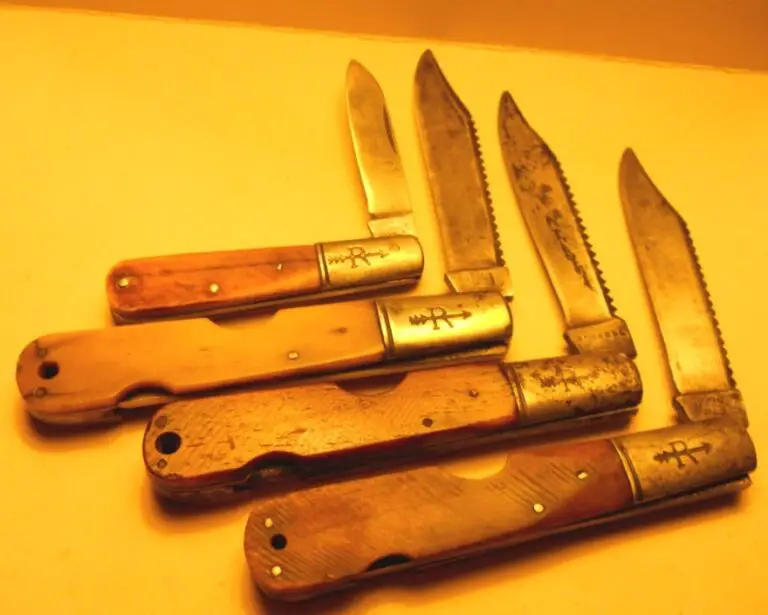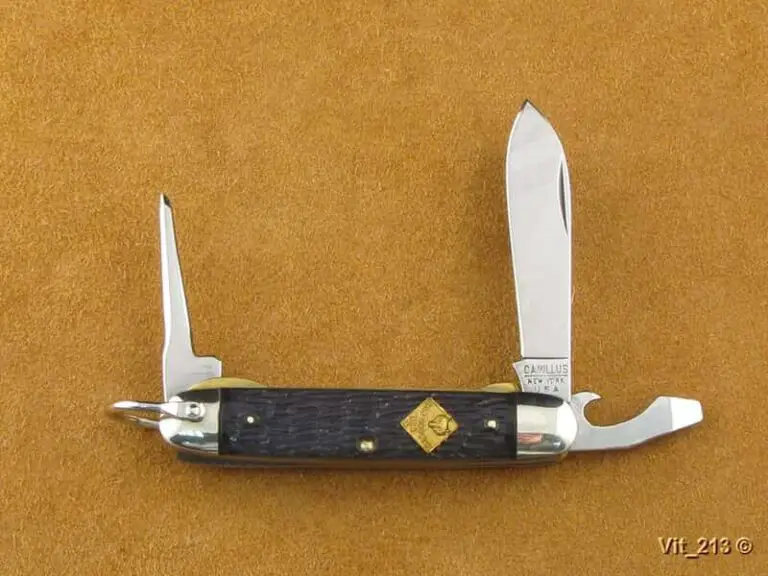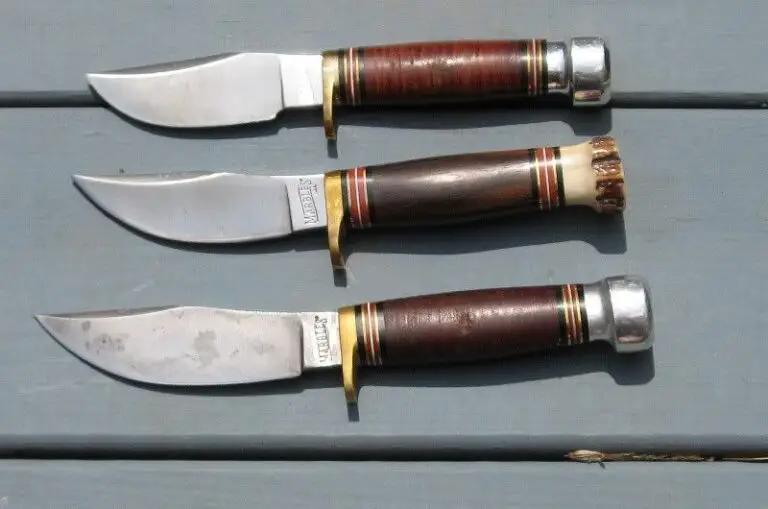If you have spent some time here before, then we have dated some pretty amazing knives together. Of course, they were sharp and most of them are older than us, but that doesn’t mean we lost interest.
Today, it’s time to date the Cattaraugus knife to a specific era and see what beauty you have on hand.
At the end of this piece, you should already be able to tell a fake from an original Cattaraugus, date your knife to a specific era and maybe narrow down the year too. How about that?
Table of Contents
Who Made Cattaraugus Knives?
A little history goes a long way in helping us to date these knives sometimes.
The journey to the Cattaraugus knives began in 1882 when Jon Champlin founded the Cattaraugus company with Tint, his son. The company did not start as a knife-making brand but was instead a wholesaler that bought and distributed to other sellers and wholesalers in the US market.
After 8 years in the business, Jon Champlin believed that he had seen enough of the market to understand where the demand was, what the shortcomings of the market were, and where improvements could be made.
Thus, he branched out a part of the company, named Cattaraugus, and dedicated it to making knives.
He got started by purchasing knife-making and cutlery equipment from Beaver Falls Cutler Factory which was failing at the time. Now that he had the right tools, he doubled down by bringing in high-quality cutlers from all of Europe (England and Germany) and the US itself.
He soon started supplying knives of this own which became a hit with the market, due to their American-made origin and a combination of quality materials with top-shelf craftsmanship.
During the second world war, Cattaraugus stopped making everyday knives and started making exclusive knives for the military. Due to their ease of use and exceptional quality, they were rewarded with an “E” stamp of excellence by the military.
Setting the standards for how American knives were measured, Cattaraugus knives still exist today and have become a collector’s fancy too.
Challenges in Dating the Cattaraugus Knives
I would not drum things up by telling you that it is very difficult to date these knives. They are one of the most pleasant knives to date that I have come across (for lack of variations).
One of the main challenges is with the knives coming with different stamp number lengths across different models.
For the models that have these numbers, you could have between 4-6 numbers on them. If you are not very familiar with other number variations, that might make you think that they are fake.

On the more challenging side, Cattaraugus did not vary their stamps as much and did not even try to document changes made per year. This makes it impossible to follow what exact year a knife from the company was made in.
Those who know the Cattaraugus history know that the company was sold in the 60s.
The nice company thought it would be a great idea to distribute the remaining parts that it was yet to sell among some people. These people proceeded to put the parts together by themselves and sell them as the real thing. That, again, is a tough break when you come across some Cattaraugus models.
Fortunately, you and I have our wits about us today – so let’s get to dating these knives the best we can.
5 Methods to Date the Cattaraugus Knives
Here are some proven methods to help you identify your knife and what era it was made in:
Method #1 – Forget tang stamps
With other knives that I try to date, the tang stamps are a great place to look.
Whether the company got sold to another brand at some point or simply decided to change the design, the tang stamp held a lot of promise.
With the Cattaraugus knives, though, you won’t get a lot of variants to give you enough information.
While I don’t know what model you have, there is a high chance that the tang stamp is any of:
- CCC Co. Little Valley, NY;
- Cattaraugus Cutlery Company, Little Valley, New York; or
- “3C” (without the quotes) placed in a circle.
See why that is not going to get us anywhere since they weren’t consistent with the models?
Method #2 – Check if it is a wartime model
At some point in its history, Cattaraugus stopped making everyday knives and was making knives exclusively for the military. This started during WW2 which was also when they came out with the 225Q knife.
I will discuss more on what the number markings mean later.
I believe they only made two knives during this time which was that 225Q and the larger folding machete.
PS You know that a machete is also a knife, right?
So, if you have any one of these knives, know that they are dated around when the second world war was already underway till the end of the way. So, the early 40s to the mid-40s.
Method #3 – Read the catalogs
Due to the minimal to no changes that occurred in the style and production of these knives, a good catalog is a fine place to turn.
Now, catalogs are not things that you find around easily. You might need to go to a gun and knife show, speak with a dealer or you could also be lucky to come across a catalog too.
When you find one, make sure you start by checking through the model numbers (again, more on this below) and dating the knife from there.
Method #4 – Buy reference books and guides
I would have loved to recommend one of these books to you but I am yet to read anyone of them myself. Still, I have heard that there are some fine ones out there that talk about the Cattaraugus knife.
An example is this Romance of Collecting (1978) by Lavona A. Ferguson which promises to go in-depth on Cattaraugus knives too.
Method #5 – Go to expert knife collectors
This time around, I don’t think you will get much success with forums.
Cattaraugus made over 100 models of their knives in such a short timeframe that no one person can claim to have mastered it all, especially if that’s not how they make their living. That is why you will have a better chance with knife collectors who have a vested financial interest in knowing their knives better.
In this case, make sure to approach multiple collectors to have a better idea of when your knife came from. Don’t assume that one collector knows it all as they might miss some subtle details or not be experienced enough.
What Do the Tang Stamps Mean on A Cattaraugus Knife?

While the tang stamps offer little to no help in dating the knife, they do a fine job of telling you more about the knife you have at hand,
Some of these tang stamps vary from a 4-character system to a 6-character system. You could also find some with alphabets to make up the count. Those alphabets also have a story to tell.
Here are some of the information you can get from that tang stamp.
Number of blades
The first number in the tang stamp indicates the number of blades that the knife was originally made with. So, you can’t have a zero (0) here.
Cattaraugus generally made knives with 1-4 blades, depending on the model that you are buying.
Type and number of bolsters
I’m sure you already know what a bolster is on a knife.
Cattaraugus had the habit of using the second-placed number to show you how many bolsters the knife had. They could also switch things up to indicate the kind of bolster on the knife.
Here are the different numbers that can exist in the second position, and what they mean:
| Bolster (Second) Number | Meaning |
|---|---|
| 0 | No bolster |
| 1 | One bolster |
| 2 | Two bolsters |
| 3 | Tip bolster |
| 4 | Unknown design |
| 5 | Slant bolster |
You can confirm your bolster type from the table above.
Factory pattern number
The factory number is the next two numbers after the first two above. This is why the number system can only start from four.
After some time, it was observed that the factory’s patterns were not consistent across multiple knives even if they had the same pattern number.
For example, a 20225 pattern is supposed to look the same as the 21225 patterns since they are both pattern 22. Given that the company came up with a lot of patterns, though, it was almost impossible for them to be that consistent.
That is a shame as we could have had better dating insights into these knives with those pattern numbers.
Handle type
The fifth number, which is usually the last numeric character, refers to the handle material and type.
Check the table below for a guide to referencing what handles corresponds to the fifth number:
| Handle (Fifth) Number | Handle Type |
|---|---|
| 0 | Metal/ Iron |
| 1 | White Fiberloid |
| 2 | Imitation/ French Pearl |
| 3 | Mother-of-pearl |
| 4 | Fiberloid |
| 5 | Genuine stag |
| 6 | Ebony |
| 7 | Cocobolo/ Burnt Bone/ Fancy fiberloid |
| 8 | White Bone |
| 9 | Jigged Bone |
Does your handle material match the codes? If it does, then you have an original. Otherwise, the handle might have been restored or changed on that knife.
The alphabets
Although these alphabets don’t come with every model, they provide an additional piece of information on the models that they do come with.
Find out what the alphabets mean below:
| Alphabet Code(s) | Handle type |
|---|---|
| G | Gambier Pearl |
| OP | Opal Pearl |
| OR | Oriental Pearl |
| PP | Peacock Pearl |
| B | Blue Celluloid/ Burnt Bone |
| R | Red Celluloid |
| Y | Yellow Composition |
These alphabet codes modify the last number (handle) better by informing you of the type of pearl, celluloid, or composition used. They can also tell more of the form of these knives, such as the ones seen below:
| Alphabet Code(s) | Knife details |
|---|---|
| BW | Barlow pattern knife |
| C | Clip blade/ candy-striped celluloid handles |
| D | Screwdriver blade |
| F | Flat bolsters |
| JR | Junior pattern knife |
| L | Locking mechanism present |
| P | Pen blade |
| S | Scribing/ spear blade, shield |
| SH | Sheepfoot blade |
| Spat. | Spatula blade |
| SS | Stainless steel |
| W | File blade/ wrench |
| WH | Whittler patterns |
With such attention to detail, one begins to wonder why they never thought about adding something for the year in there.
Happy Cattaraugus Knife Dating
I believe you have everything you need to identify your knife and try to date it also.
Whenever you cannot narrow down the years, just know that the knife was made between 1890 to the mid-sixties. If you plan to go that way, use the guide above to confirm that you have an original, and you are good to go.


